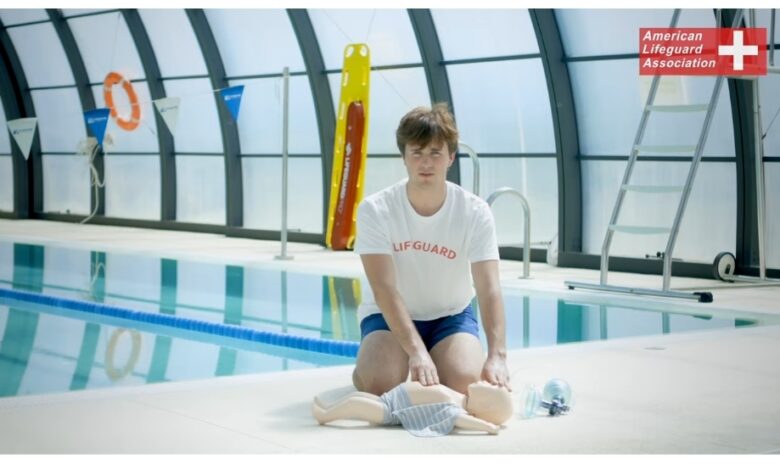Safety Tips to Keep Kids Safe at Swimming Pools

As the summer gets hotter, people flock towards aquatic facilities such as swimming pools to beat the heat. Swimming pools, in summer, are more sort of fun places where whole families can have a fun escape from summer heat. But there is a serious responsibility between splash and laughter – especially to ensure water safety for children. Drowning is one of the major causes of unknown injuries in children, causing vigilance supervision and a trained lifestyle is more important than ever.
Let us take a detailed look that how lifeguard training, supervision and water safety strategies contribute to the safety of children in swimming pools.
Importance of continuous supervision
Supervision is the first line of defence in preventing water-related accidents. This does not mean that now and then children should be looked at – this requires active, engaged observation. Adults responsible for watching children should avoid distractions such as phones, books or long interactions.
The concept of “touch supervision” is highly recommended for young children and early swimmers. In large public pool settings, trained lifeguards provide an additional and required layer of safety, apply rules and respond rapidly to emergencies.
Lifeguard Training: A Lifesaving Profession
Lifeguard training is more than learning only to swim and use a whistle. This includes intensive research in water rescue technology, CPR, AED use, first aid and landscape-based emergency response. Lifeguard is trained to scan large areas, identify early signs of crisis and take immediate action. Well-trained lifeguards are the backbone of water security in the swimming pool.
The Lifeguard Shortage and Its Consequences
In recent years, pool operators across the US have reported significant difficulty in hiring and maintaining certified lifeguards. This deficiency has reduced the pool hours, closing swimming areas and lack of supervision has increased risks. The effect of this deficiency is felt the most intensely in areas with high hair activity.
Without adequately trained professionals to monitor swimmers, the possibility of accidents increases to a great extent. Lifeguard training programs require immediate investment and promotion to address this difference and ensure that security has not been compromised.
Pool design and safety facilities cases
In addition to supervision and trained lifeguards, pool design and equipment also play an important role in the safety of children.
Major security features include:
- Visibility of clear water: It ensures that lifeguards and supervisors can quickly put swimmers in crisis.
- Fencing and Gates: Proper enclosures prevent unsafe access to pools.
- Security Signage: Running, diving and rules regarding horseplay help to guide safe behaviour.
- Rescue equipment: Life rings, poles and first aid kits should be easily accessible.
- Depth markers: Displayed markers inform swimmers about the pool’s varying depths, helping children avoid areas that may be unsafe for their skill level.
Teaching Kids Water Safety Skills
While adult supervision and trained lifeguards are unavoidable, empowering children with basic water security enhances their safety significantly. Children can be prepared for safe water experiences to swim at an early age, understanding the importance of pool rules, and listen to lifeguards. Simple lessons such as “not swimming alone”, “Ask before entering the pool,” and “stay away from drains and pool cover” can lead a long way to reducing events.
Parents’ Responsibility and Vigilance
Parents and parents play an irreparable role in water security. Despite the number of lifeguards on duty, parents should keep a vigilant eye on their children all the time. They should also ensure that floating devices are coast guards-oriented and not relying as an alternative to supervision. Additionally, parents should consider basic water prevention and enroll in CPR courses. In emergencies, a sharp, knowledgeable response may be the difference between life and death.
A Trusted Voice in Water Safety: American Lifeguard Association
The American Lifeguard Association is a prominent leader in aquatic safety training and education. Often quoted in electronic and print media, the organization is known for raising awareness about its expertise in water security and the lack of nationwide lifeguards. The association advocates high standards in training and works to ensure that more individuals are designed to work as competent lifeguards.
By offering nationally recognized Certification Programs, The American Lifeguard Association Supports Thousands of Facilities in Creating Safeer Swimming Environments for, Especially Children. Their continuous dedication to Lifeguard training helps to prevent communities from drowning and equip them with the necessary equipment and knowledge to improve pool safety.



